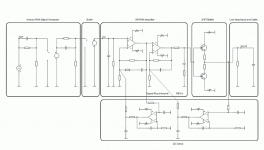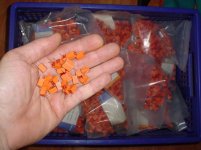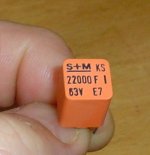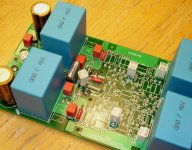transient behaviour
Wow! Transient behaviour of RIAA equalization is really pretty interesting. Look at the passive circuit response. We sometimes blame it on servos or AC coupling, no no . It is ONLY a question of RIAA transfer characteristics, no matter how it is realized, just MATH.
. It is ONLY a question of RIAA transfer characteristics, no matter how it is realized, just MATH.
Wow! Transient behaviour of RIAA equalization is really pretty interesting. Look at the passive circuit response. We sometimes blame it on servos or AC coupling, no no
 . It is ONLY a question of RIAA transfer characteristics, no matter how it is realized, just MATH.
. It is ONLY a question of RIAA transfer characteristics, no matter how it is realized, just MATH.Attachments
peranders,
thanks again. May I have the direct link to your MC amp? I need something to criticize.
😀
thanks again. May I have the direct link to your MC amp? I need something to criticize.
😀
MicroCap
Lumba -
another software to do SPICE simulations with is MicroCap from Spectrum Software. I have tried both LTSpice and MicroCap and
find that MC is far easier to use. I also find that schematics made by MC is easier to read.
Give it a try!
MicroCap
Attached is a RIAA I put together to try out some ideas.
The first OPamp is AD745. The 2nd OPamp can be one's preferred OPamp. The AD745 is powered by +-5V and the 2nd by max allowed rails.
If one likes, one can force th OPamps into class A.
Servo OPamps can be for ex OPA134.
Sigurd
Lumba -
another software to do SPICE simulations with is MicroCap from Spectrum Software. I have tried both LTSpice and MicroCap and
find that MC is far easier to use. I also find that schematics made by MC is easier to read.
Give it a try!
MicroCap
Attached is a RIAA I put together to try out some ideas.
The first OPamp is AD745. The 2nd OPamp can be one's preferred OPamp. The AD745 is powered by +-5V and the 2nd by max allowed rails.
If one likes, one can force th OPamps into class A.
Servo OPamps can be for ex OPA134.
Sigurd
Lumba Ogir said:thank you peranders,
I cannot do simulations properly, I`m afraid, but it`s OK. Many times I instinctively feel that far too low current is provided to drive EQ networks with high capacitances and low impedances.
Attachments
Re: MicroCap
You ment something else I'll believe?Sigurd Ruschkow said:The AD745 is powered by +-5V
Sigurd,
thank you for your kind help, I will check it out. I am using LTSpice mainly to draw and for simple voltage/current examinations.
Some kind of headroom issue is being discussed in this thread, but not the filter network as a load and its current requirement. I consider it as the most significant source of distortion.
thank you for your kind help, I will check it out. I am using LTSpice mainly to draw and for simple voltage/current examinations.
Some kind of headroom issue is being discussed in this thread, but not the filter network as a load and its current requirement. I consider it as the most significant source of distortion.
It's more important with the feedback network if you have only one opamp and a non-inverting connection AND want low noise. Then the load can be quite heavy.Lumba Ogir said:Sigurd,
thank you for your kind help, I will check it out. I am using LTSpice mainly to draw and for simple voltage/current examinations.
Some kind of headroom issue is being discussed in this thread, but not the filter network as a load and its current requirement. I consider it as the most significant source of distortion.
If you have a two opamp solution the RIAA filter is not a particularly heavy load.
MRupp said:Ingo Hansen
Isn't that the guy with the Bi Butt Boards ? (
 )
)Mr I.H. probably had a different sound/vibration professor in college than moi, i'm more inclined to an approach such as THIS
Maybe still hogwash compared to the level of excitation forces in other (more interesting) areas where lack of mass usually is a problemo, click ME for pretty pictures.
(me thinks that for polymere subchassis kiddy toys it's more sane to pick a polyamide instead of teflon, something like PA6 is a whole lot cheaper)
The balanced phono stage for MC doesn't seem to be the winner, howcome ?
I'm curious if Rüdiger is on Thel/EMZ RIAA-medication or the real Siemee deal ? Can't tell from the pic.
Attachments
Lumba Ogir said:peranders,
I am planning a discretely made non-feedback balanced topology.
I'm looking forward to it!
Rüdiger
Re: Re: MicroCap
No,
my idea to use such low rails is that Ib goes down.
Sigurd
No,
my idea to use such low rails is that Ib goes down.
Sigurd
peranders said:
You ment something else I'll believe?
Jacco -
you can get them in black from LCR in the UK via Farnell,
and I have them in white (RIFA PFE225 -discontinued). See attachment.
Good for PS decoupling which is where I use mine. Not sure about their sonical qualities in RIAA networks, though.
There I use film type PS caps. A 220n type is pretty large, but if space is not limited, give them a try.
Sigurd
you can get them in black from LCR in the UK via Farnell,
and I have them in white (RIFA PFE225 -discontinued). See attachment.
An externally hosted image should be here but it was not working when we last tested it.
Good for PS decoupling which is where I use mine. Not sure about their sonical qualities in RIAA networks, though.
There I use film type PS caps. A 220n type is pretty large, but if space is not limited, give them a try.
Sigurd
jacco vermeulen said:Que, for a FET input opamp ?
That's the general problemo overhere, everything is Orange, even polystyrenes for phono EQ.
Attachments
Re: Re: Re: MicroCap
The first opamp should have as high supply voltage as possible if you want to have a passive correction. Ib is rather uninteresting, surely?Sigurd Ruschkow said:No,
my idea to use such low rails is that Ib goes down.
Sigurd
- Status
- Not open for further replies.
- Home
- Source & Line
- Analogue Source
- Solid state phono preamp design philosophy
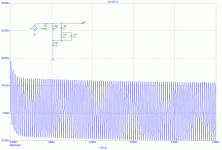
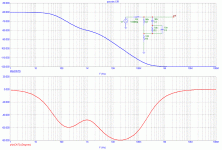
 You are welcome to come with opinions.
You are welcome to come with opinions. 

